As we are going to talk about the 11 Countries with the Best Road Infrastructure in the World, it would be a good idea to take you on the road to understanding what infrastructure means. Infrastructure can be considered the skeleton on which a country’s economy is supported. These are the basic facilities that help its citizens and its industries to communicate, connect, and meet the demand-supply gaps. Infrastructure consists of roads, railways, water transport, telecommunication, power, air transport and urban infrastructure. Lifestyles are defined primarily by the availability and quality of the infrastructure. Furthermore, most of the economic indicators point towards the development of the infrastructure in a country. A country can try to accelerate growth by spending more on building infrastructure, which in turn increases demand for capital goods, employment, per capita income – which in turn put more money in the economy. Just like well-developed infrastructure can bring prosperity to a region, as they do, for example, in China, an absence of adequate infrastructure can push any region towards poverty as, for example, in Sudan.
Roads form an integral part of the infrastructure. Air transport is fastest (considering we are yet to reach teleportation age), water transport is most economical means to transport cargo, while railways provide cheaper and comfortable means of transport for citizens. However, roads provide the last mile connectivity, which is basically the connectivity from the origin to the destination. All other means of transportation require road connectivity to supplement them. More importantly, roads reach the remotest parts of the world, connecting the rural and underdeveloped population with the rest of nation. It helps in evacuating the produce from such remote location to the urban areas where it will be consumed, and, in return, essential products and facilities can reach the rural areas. The importance of a good road network is evident from the disparity between the developed nations and the third world countries. The USA – with 6,586,610 km of paved roads – has a total GDP of $17.42 trillion. Niger has only 18,949 km of paved roads, and it has a GDP of $8.169 billion.
Understanding development road sector helps businesses and citizens in understanding the policy initiatives taken by the incumbent governments and the likely impact on the overall economic scenario. Furthermore, many other industries are dependent on the road sector. Road construction provides employment to a skilled and unskilled workforce, generates opportunities for equipment manufacturers, generates revenue for the government by way of tolls and other taxes, boosts real estate development along the route and more importantly, as stated earlier, helps boost trade for the region.
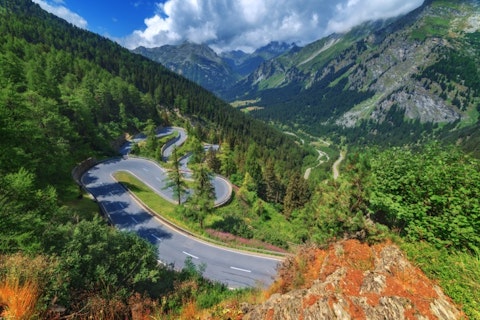
Smit/Shutterstock.com
Road infrastructure is the collective term given the structures that make the roadways like the main paved/unpaved sections of the road, the side areas that are called shoulders, various structures like flyovers, bridges, and facilities to drain the water from its surface. Roads are classified based on the categories like national highways/expressways (which are primarily high-speed corridors that are connecting important trade centers/business centers or capitals of state), state highways that primarily connect important places between districts in a state, district roads that connect important centers within a district, and rural roads that are important in a sense that they are probably the only means for the rural population to connect to the urban centers via intermediate points. Roads can also be classified by the materials used for constructing it, like asphalt roads (flexible pavement roads) and concrete roads (rigid pavement roads).
Construction of roads is equally important as maintaining the roads and keeping the service level of the roads at the desired level of operations. Poorly maintained roads adversely affect the system as they damage the vehicles and in turn the passengers can increase pollution level due to poorly maintained vehicles and most importantly drain the public funds in repairs. Roads that are not being well maintained can also cause accidents and result in loss of lives and properties. Driving on a well constructed and well-maintained road is always pleasure, and many times treacherous and damaged roads can give rise to cases of road rages among the drivers. To understand which are the countries having best roads, do read our article on 11 Countries with the Best Roads in the World.
All these factors were considered while ranking the 11 countries with the best road infrastructure in the world. Our methodology and factors we’ve considered are explained briefly in the following paragraphs.
The Length of Roads – The length of the roads, though in absolute terms, cannot determine the development of the road infrastructure in a country, it surely does show the amount of efforts put in, by respective countries, in providing its citizens fast and efficient mode of traveling. Furthermore, for a country with a large geographical area, the existence of a large road network conveys the progress made by the country in promoting economic activities to wider areas. This ranking system uses the length of the road in absolute terms as well as by finding out road density and by finding out the length of the road per capita.
The Quality of Roads– It’s not enough for a country to have just more roads or long routes. A road is made for fast, smooth and safe movement of vehicles. As such, any motorable road should be built of serviceable quality, and it should meet the requirements as set by its designers. According to a report, in India in 2012, approximately $16.71 billion was lost in one year due to the poor condition of roads. Furthermore, poor quality of roads cause damage to the vehicle, adversely affect psychological health of drivers, and it can also damage the environment by causing more pollution due to excess fuel consumption. As the quality of roads is a subjective matter, we have used data provided by World Economic Forum on this subject. We ‘ve ranked each country on the scale of 1 to 10 with 10 being the highest ranking.
The Percentage of Paved Roads out of the Total Length – Roads connect two destinations with the shortest possible route between the two. However, the shortest possible distance is not always the straight line due to various obstacles like hills, rivers and so on. In such a case, paved roads assist the drivers in traversing the distance in shortest possible time by providing a comfortable and smooth driving surface. Also, having more high-quality paved roads reduces the other effects like operation and maintenance costs spent by the governments over the life-cycle of the roads, wear, and tear of the vehicles. It further saves the time taken for transporting the goods and people, thereby accelerating the economic activities. In ranking the countries, we’ve considered the percentage of paved roads out of the total length of the roads in that country.
Expenditure on Roads as % of GDP- Apart from investments required for the construction of new roads, maintaining existing roads requires periodic repairs and upgradation works. Rains have serious effects on road surfaces. In countries having snowfalls, governments spend on clearing roads of snow and keeping it motorable. Accidents, water run-off, and heavy vehicles damage the road surface. In some of the countries, to maintain the serviceability, after every 2 to 5 years asphalt roads are resurfaced, whereas some of the roads require repairs due to potholes and poor workmanship during the construction phase. In all, substantial investments are required to build and maintain a good road infrastructure and we have used this as one of the ranking criteria, too. It should be mentioned here that, data on expenditure for most of the countries is not readily available in public domain, and even if available, it is not updated information. We have tried to find as accurate information and have used financial methods to estimate the expenditure made by each country. The investments in roads are further noted as % of the total GDP in order to get more realistic rankings that would normalize the effects of large spending by countries like the USA.
The Length of Road per Capita (per 1000) tries to understand transport planning efforts by the respective countries. A lower per capita figure means the network in that country is not able to keep pace with the growing population needs. In such cases, there is excess pressure on the existing infrastructure, resulting in the inefficient transport network and in deteriorating the quality of road infrastructure.
The countries are ranked based on individual scores for each of the parameters, and overall ranks were worked out based on the following formula:
Final Score = 20%*SL+ 15%*SRD+30%*SQ+10%*SP+15%*SE+10%*SPC
Where
SL- Score as per Length of Road ranking
SRD Score as per Road Density ranking
SQ– Score as per Quality of Roads Ranking
SP Score as per Paved Roads ranking
SE Score as per Expenditure on roads ranking
SPC Score as per Road length per Capita
Road safety, primarily measured by agencies like WHO, concerning road fatalities is an important factor in considering the overall quality of the road network. However, it is not possible to categorically state that poor road safety record is due to bad road infrastructure because negligence by drivers and pedestrians (and animals too in certain cases) can also be the cause of road accidents. Hence, this parameter was not used in ranking the countries with the best road infrastructure in the world.
We’ve ranked each country using all the parameters mentioned above and narrowed down the list of the countries to 40 countries that scored the highest in all the parameters except for expenditure on roads parameter. Further research was conducted on these 40 countries to find out the investments/expenditure on roads, and based on these ranks, overall ranks for each country are:
11. Austria
Length of Roads in Km 124,508
Road Density 1.48
Quality of Roads (Rating) 9.24
Paved Roads as % Total Road Length 100.00
Expenditure as % of GDP 0.08%
Length of Motorway per capita in Km 14.60
Austria is located in Central Europe and presence of Alps gives this country hilly terrain. This country has almost all the roads as paved roads and ranks high on Road length per capita as well as the quality of roads. Due to the mountainous terrain, this country has some of the most scenic routes like Grossglockner High Alpine Road, which has an elevation of 2504 meters.

Andrew Mayovskyy/Shutterstock.com
10. India
Length of Roads 4,865,000
Length per Sq Km 1.48
Quality of Roads 6.21
Paved Roads 4.74
Expenditure as % of GDP 1.63
Length of Motorway per capita in Km 0.003
The largest democracy in the world has second largest road network in the world as per 2014 figures. Road development is a major economic activity undertaken by the Government, and some of the ambitious projects include the road connecting all four corners of the country with a single route. However, poor quality of roads and high population (it is among the most populated nations in the world) gives it poor ranking in rest of the parameters.
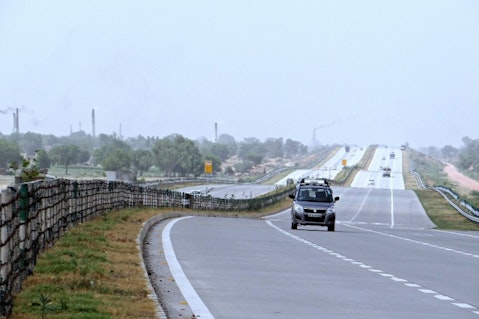
9. Poland
Length of Roads 423,997
Length per Sq Km 1.36
Quality of Roads 5.76
Paved Roads as % Total Road Length 90.27
Expenditure as % of GDP 9.00%
Length of Motorway per capita in Km 0.29
This country in the central Europe has invested heavily in modernizing its road infrastructure, which is evident from the fact that 9% of the GDP was spent on road infrastructure. The amount that Poland would have invested in 2014-15 would have been $10,295 million. It also has a vast road network spanning 423,997 km out of which 90.27% are paved roads.
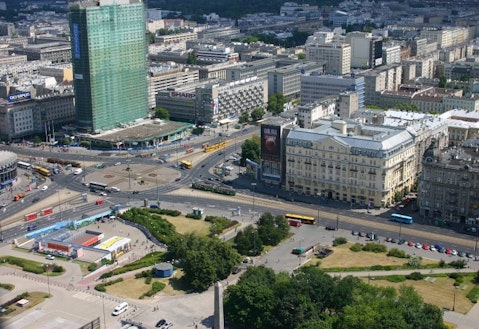
8. Switzerland
Length of Roads in Km 71,454
Road Density 1.73
Quality of Roads (Rating) 8.94
Paved Roads as % Total Road Length 100.00
Expenditure as % of GDP 0.54%
Length of Motorway per capita in Km 8.76
This scenic country has one of the densest road networks in Central Europe and ranks 5th in our ranking when it comes to high Road Density. It also ranks among the top 10 in the Global rankings by World Economic Forum. Almost all of the roads in Switzerland’s road network are paved roads. Personal transportation (cars) is a preferred mode of transport for Swiss and as such traffic congestions can be experienced in large urban areas.
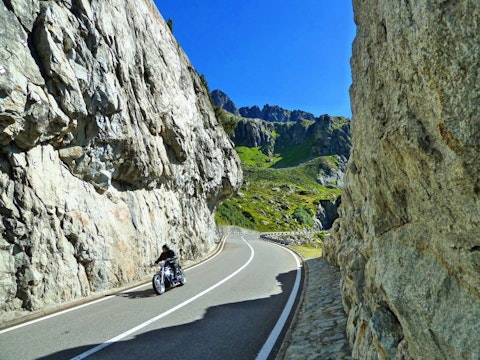
7. Portugal
Length of Roads in Km 82,900
Road Density 0.90
Quality of Roads (Rating) 9.39
Paved Roads as % Total Road Length 86.00
Expenditure as % of GDP 0.45%
Length of Motorway per capita in Km 39.96
A report by World Economic Forum ranks Portugal 2nd among 144 countries for the quality of the roads. Also, it has the highest length of road in km per capita among the 11 countries. Portugal also has some of the most scenic roads in the world which are maintained at the high quality of standards.

6. Spain
Length of Roads in Km 683,175
Road Density 1.35
Quality of Roads (Rating) 8.79
Paved Roads as % Total Road Length 99.00
Expenditure as % of GDP 0.47%
Length of Motorway per capita in Km 14.52
This country is ranked 3rd in the world when it comes to the length of the expressways. The tolled motorways are called Autopistas, and they have a speed limit of 120 km/hr. The advancement in Spain in the development of road infrastructure is evident from the fact that today many of the construction companies, undertaking global road contracts in countries like the USA, UAE, are from Spain. Spain also scores high on Length of Motorways per capita.
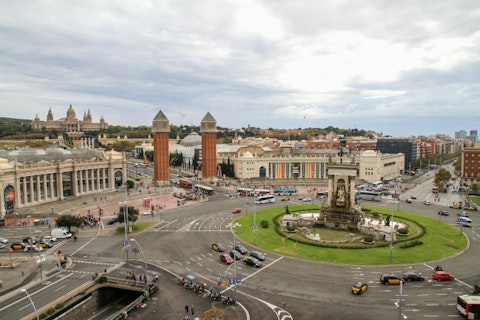
5 . The Netherlands
Length of Roads in Km 139,295
Road Density 3.35
Quality of Roads (Rating) 9.39
Paved Roads as % Total Road Length 90.00
Expenditure as % of GDP 0.30%
Length of Motorway per capita in Km 8.29
According to a report prepared by SWOV Institute for Road Safety Research, the road usage in Netherlands has increased exponentially and individuals completed almost 200 billion km of travel in 2013. It also ranked very high in the road density parameter and the quality of the roads. Interestingly, Dutch loves their bicycles, and this is one of the most preferred modes of transport in Netherlands. As such road network in the Netherlands has designated cycling tracks as well as parking facilities for cyclists.
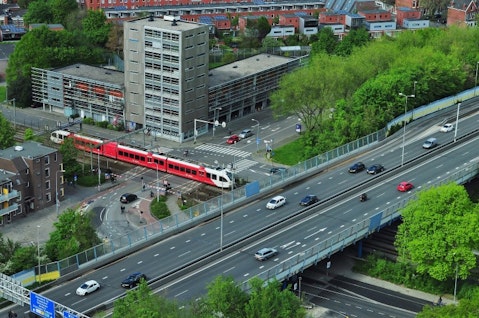
4. Japan
Length of Roads in Km 1,215,000
Road Density 3.22
Quality of Roads (Rating) 9.09
Paved Roads as % Total Road Length 79.29
Expenditure as % of GDP 1.46%
Length of Motorway per capita in Km 9.57
Japan was ranked 8th in the world in terms of the Quality of Roads by World Economic Forum in its ranking in 2014-15. It also ranks high in terms of length of road network among the countries with road network spanning 1,215,000 and around 950,252 km of paved road. Japan’s road infrastructure development has been used by many Asian countries as a role model. According to estimates, Japan has spent approximately $67,061.93 million. Out of the 40 countries reviewed under this ranking, only USA invests more in road sector than Japan
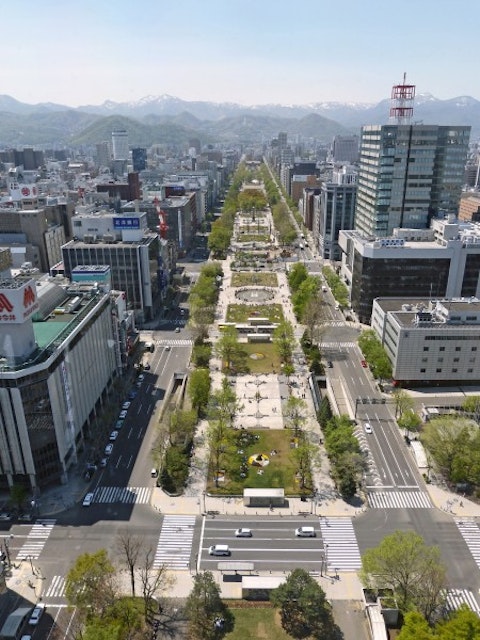
3. Belgium
Length of Roads in Km 154,012
Road Density 5.04
Quality of Roads (Rating) 7.73
Paved Roads as % Total Road Length 78.21
Expenditure as % of GDP 3.61%
Length of Motorway per capita in Km 13.82
This country ranked highest in terms of road density and also has the densest road network in the world. Still, according to a report by Inrix, Belgium is ranked 1st among the most congested countries in Europe. Among the countries that were ranked, Belgium scored high on almost all the parameters including, the length of the roads, expenditure on the road network and the length of motorway per capita putting this country the third best among the countries with the best road infrastructure in the world.
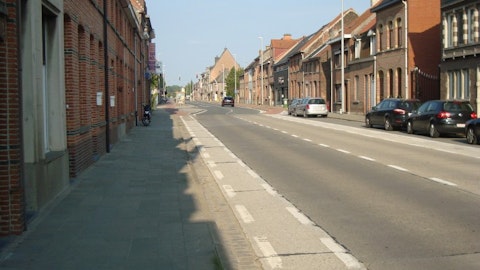
2. Singapore
Length of Roads in Km 3,496.00
Road Density 4.77
Quality of Roads (Rating) 9.39
Paved Roads as % Total Road Length 100.00
Expenditure as % of GDP 0.5%
Length of Motorway per capita in Km 0.09
Only Belgium scores more than Singapore in terms of Road density. All of its 3496 km of road length is paved, and it ranks very high in the Quality of Roads parameter (combined 2nd with Netherlands and Portugal) as per the World Economic Forum Report. Being an Island country having the limited land area, Singapore puts emphasis on strengthening its public transport and has launched a Smart Mobility Plan with an aim to seamlessly integrate commuting options available. In its effort to minimize traffic congestion, Singapore levies high taxes on new vehicles and it also charges vehicles when entering its central business districts. All these efforts by the government to strengthen the already developed infrastructure system and high quality of road
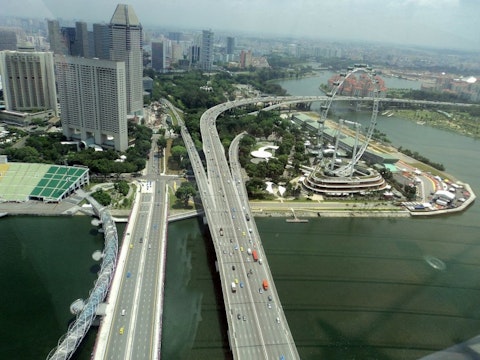
1. The United States
Length of Roads in Km 6,586,610
Road Density 0.68
Quality of Roads (Rating) 8.64
Paved Roads as % Total Road Length 65.34
Expenditure as % of GDP 0.41%
Length of Motorway per capita in Km 20.42
This superpower has the longest road network in the world spanning more than 6.5 million km. Also, it has more expressways than any other country in the world. The US road network is made of interstates; the US numbered highways, state highways and county highways. United States spends approximately $71, 312 million on road infrastructure. Anyone who has traveled the US would have noticed its carefully planned road network, well-developed numbering system, some iconic routes like Route 66 (remember the movie Cars and the Radiator Springs) and high-quality pavements, which all ranks this country at number 1 on our list of 11 Countries with the Best Road Infrastructure in the World.

Scott Prokop/Shutterstock.com





